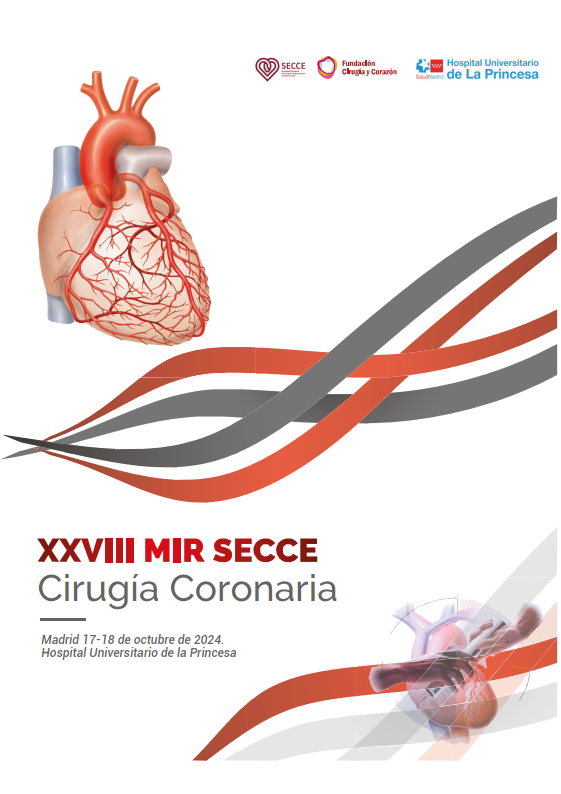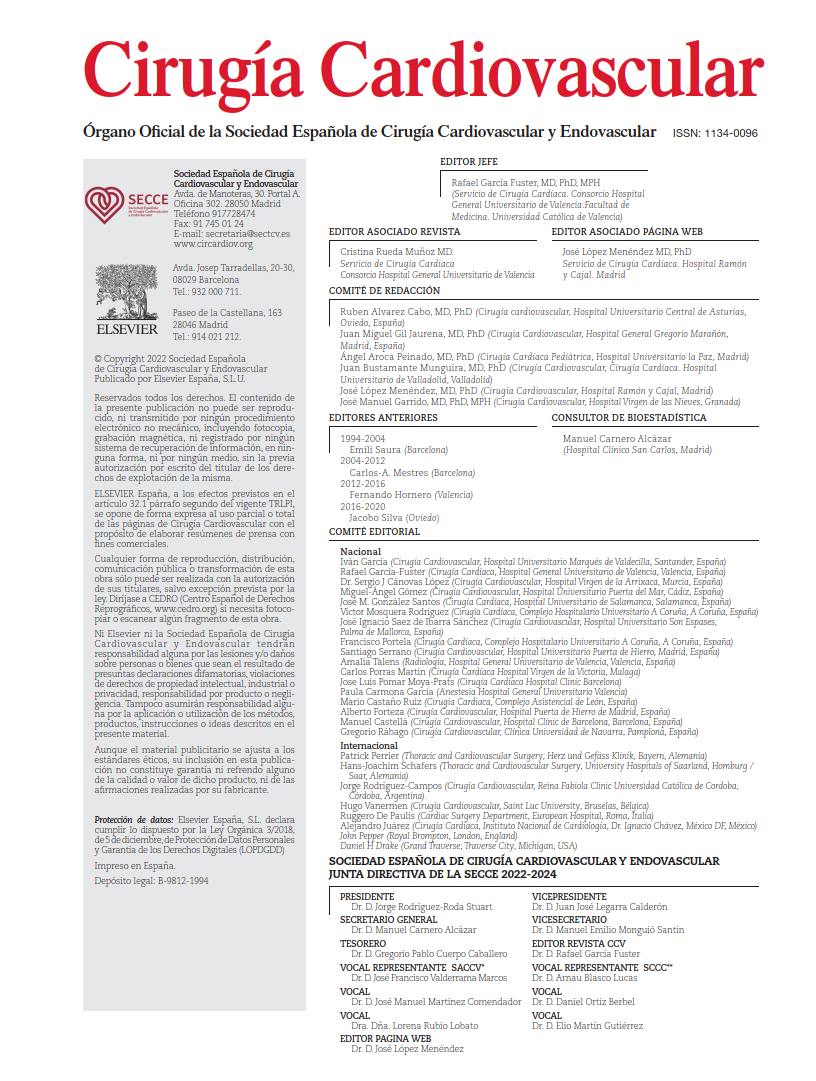Aortic stenosis is a progressive and life-threatening disease, associated with high morbidity and mortality. It leads to structural cardiac damage, symptomatic deterioration, reduced quality of life, and even sudden cardiac death, in addition to generating considerable healthcare and societal costs. Current clinical practice guidelines recommend aortic valve replacement (AVR) in symptomatic patients and/or in those with reduced left ventricular ejection fraction (LVEF) to improve symptoms and survival. However, the optimal timing for intervention in asymptomatic patients with severe aortic stenosis remains uncertain, as most of these individuals develop symptoms within 1 to 2 years of diagnosis. In fact, recent guidelines recommend close surveillance in asymptomatic patients with preserved LVEF. Observational studies have suggested that AVR in asymptomatic patients may reduce mortality and heart failure (HF)–related hospitalizations. Recently, several RCTs have been published evaluating the outcomes of early invasive management, including surgical AVR (SAVR) or transcatheter aortic valve replacement (TAVR), compared with a strategy of routine clinical surveillance.
Généreux et al. conducted a meta-analysis of RCTs comparing AVR or TAVR with clinical surveillance in patients with asymptomatic severe aortic stenosis. A random-effects model was used, with four prespecified endpoints: all-cause mortality, cardiovascular (CV) mortality, unplanned CV or HF hospitalization, and stroke. The primary endpoint was all-cause mortality, while the others were secondary endpoints. After a systematic literature review of 895 records, four RCTs (EARLY-TAVR, EVoLVeD, AVATAR, and RECOVERY) were included in the quantitative analysis. A subgroup analysis was performed excluding the EVoLVeD trial, which did not stratify results by treatment modality. Heterogeneity was assessed using the I² statistic, representing the percentage of variability not attributable to chance. A total of 1,477 patients were included, with a mean follow-up of 4.1 years. The mean age was 73.3 years, with variable proportions of female participants and patients with bicuspid valve disease across studies.
In terms of outcomes, no statistically significant differences were observed for the primary endpoint of all-cause mortality (p = 0.17), nor for CV mortality (p = 0.23), with moderate heterogeneity (I² = 61% and 50%, respectively). In contrast, AVR significantly reduced the risk of HF-related hospitalizations (p < 0.01; I² = 0%) and unplanned CV or HF hospitalizations (p < 0.01; I² = 4%), as well as the incidence of stroke (p = 0.03; I² = 0%), with low heterogeneity. Subgroup analysis revealed no significant differences between SAVR and TAVR for most endpoints, except for all-cause mortality, where a survival benefit was observed in patients undergoing SAVR but not in those treated with TAVR. The authors suggest that this finding may be explained by differences in baseline characteristics—such as older age and higher comorbidity burden in TAVR patients—by delays to intervention in the clinical surveillance arms of the surgical trials, or by the shorter time to intervention in the EARLY-TAVR trial, where all patients had undergone prior evaluation for TAVR before randomization. The observed benefit in HF and unplanned hospitalizations was attributed to improved hemodynamics following intervention, leading to decreased pressure overload and myocardial damage. Moreover, early intervention might allow patients to undergo the procedure under more stable clinical conditions, potentially reducing procedural risk. Notably, the lower stroke rate in the early intervention group is striking, considering the recognized risk of neurologic complications associated with both techniques. The authors hypothesize that AVR may reduce embolic risk from diseased native valve tissue and possibly the burden of atrial fibrillation (AF), though further studies are needed to confirm this hypothesis. Limitations of the meta-analysis include potential concerns about heterogeneity due to the small sample size and limited long-term follow-up, which precludes firm conclusions on late outcomes.
COMMENTARY:
This meta-analysis, which includes four RCTs published in recent years, addresses a frequent clinical dilemma: how should we manage patients with asymptomatic severe aortic stenosis? Should we intervene early, or continue with clinical surveillance? Importantly, this meta-analysis reflects contemporary clinical practice by including both invasive treatment strategies currently available—SAVR and TAVR.
The findings suggest that early invasive management does not reduce all-cause or cardiovascular mortality in the overall population. However, patients undergoing SAVR appeared to derive survival benefits, as shown in individual trial results. Specifically, the AVATAR and RECOVERY trials demonstrated significant reductions in mortality, a finding not replicated in EARLY-TAVR or EVoLVeD. The observed reductions in HF and unplanned CV hospitalizations highlight the inherent difficulty in predicting symptom onset, even with close follow-up. Serial NT-proBNP monitoring has been proposed as a potential strategy to identify clinical deterioration, though it may not be sufficient on its own.
As noted by the authors, the reduction in stroke risk among patients undergoing early AVR is unexpected, as stroke remains one of the most feared complications of both SAVR and TAVR. Patient-level characteristics are not detailed in the meta-analysis or supplementary materials, including the prevalence of AF or use of antithrombotic therapy, which could have explained some of the differences observed between groups.
One striking aspect of this meta-analysis is that three of the four trials included were authored by the principal investigators of the meta-analysis itself, raising the possibility of bias. Nonetheless, these findings contribute to the growing body of evidence supporting early intervention in asymptomatic patients with severe aortic stenosis, particularly with the goal of reducing HF decompensation, hospitalizations, and complications such as stroke. These results may have an impact on future clinical practice guidelines.
REFERENCE:
Généreux P, Banovic M, Kang DH, Giustino G, Prendergast BD, Lindman BR, et al. Aortic Valve Replacement vs Clinical Surveillance in Asymptomatic Severe Aortic Stenosis: A Systematic Review and Meta-Analysis. J Am Coll Cardiol. 2025 Mar 11;85(9):912-922. doi: 10.1016/j.jacc.2024.11.006. Epub 2024 Nov 18.



